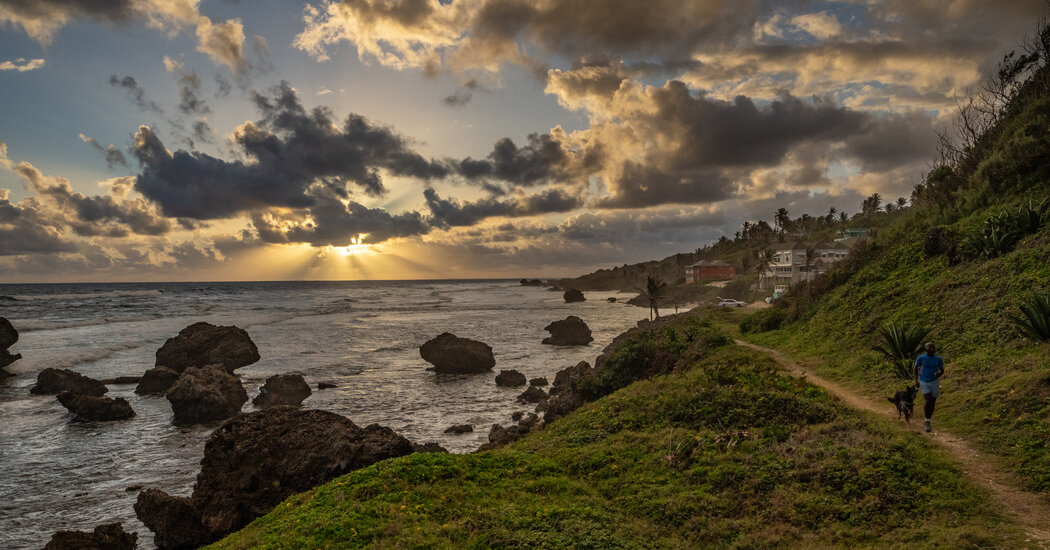One sunny Saturday in the middle of the island of Barbados, in the eastern Caribbean, among former sugar cane plantations, I found myself eating fried sea cat in the yard of a rum shop called De Thirsty Lizard in the village of Bridgefield.
Remixed versions of Rihanna songs and reggae bounced across the gravel courtyard as locals streamed in wearing stylish, spend-the-whole-Saturday-out outfits, with brightly-patterned shirts and dresses, tilted fedoras and mirrored sunglasses. Denise Alleyne, 39, and Racquel Jordan, 45, two locals who had brought me to the Lizard, encouraged me to try the sea cat — the Barbadian word for octopus — which was served in a basket like French fries and amazingly tender.
As the yard filled up and some people started dancing, waitresses hauled ice buckets to the wobbly hightops full of young people, who grabbed the ice cubes with tongs and plunked them into glasses half-full of Barbadian Mount Gay rum. “When people come to Barbados and they ask what’s the best thing to do, this is the best thing to do,” said Ms. Alleyne.
You could say there are two ways to visit Barbados, the easternmost island in the Caribbean. One is by booking a resort on the west coast of the island, hiring a car to drop you off at reception, settling into a chaise longue in the sand and fading away into vacation mode. This method, should you choose it, can be fantastic. The beaches are almost invariably beautiful, with the leaning palms you see in screen savers curving up and out over cerulean waters. Everyone speaks English, the currency is pegged two-to-one to the U.S. dollar, the sunshine is pretty much constant, and the rum punch-fish sandwich-sunset combination would please just about anyone.
So it’s no surprise that tourism arrivals on the island have returned to prepandemic levels this winter, with 60,000 visitors arriving in December.
But independent travelers may feel that they miss something visiting Barbados in this way. For one, you’re yoked to this part of the island’s painful traffic, a crawling stream of cars inching north-south along too tight a road for too many resorts, frustrating even a quick dash to the supermarket and making roadside walking a hairy proposition.
You also end up with a peculiar view of the island: The majority of the people you’re likely to see will be white (often British) tourists, being waited on by Black locals. Most of all you miss the experience of sitting at a hightop table in the backyard of a…
Click Here to Read the Full Original Article at NYT > Travel…
